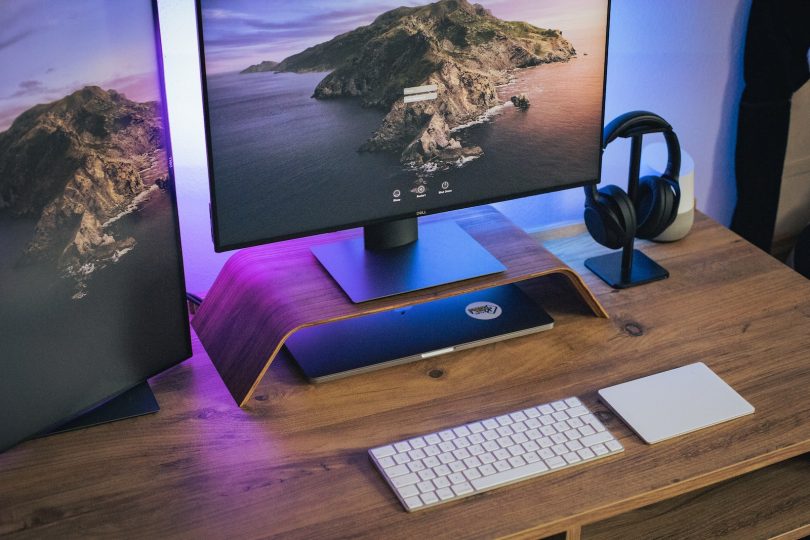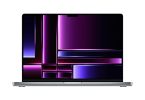When it comes to choosing a monitor for your setup, size is an important factor to consider. While 27-inch and 32-inch monitors are both popular options, they have distinct differences that can make one better suited for your needs than the other.
A 27-inch monitor is a great choice for those who want a balance between screen real estate and desk space. They offer a good amount of space for multitasking and provide sharp image quality. 27-inch monitors are also typically more affordable than their larger counterparts, making them a budget-friendly option.
On the other hand, 32-inch monitors offer a larger viewing area, making them ideal for those who need more screen real estate for their work or gaming needs. They also provide a more immersive gaming experience and can be great for watching movies or streaming videos. However, their larger size can take up more desk space, and they tend to be pricier than 27-inch monitors.
To help you decide which monitor is right for you, we’ve created a detailed comparison table that highlights the key differences between 27-inch and 32-inch monitors. This comparison covers important aspects such as resolution, refresh rate, panel type, and price. By considering these factors, you can make an informed decision and choose the monitor that best meets your needs and budget.
| Feature | 27 Inch Monitor | 32 Inch Monitor |
|---|---|---|
| Screen Size | 27 inches | 32 inches |
| Resolution | 2560×1440 or 3840×2160 (4K) | 2560×1440 or 3840×2160 (4K) |
| Pixel Density | Higher (109 to 163 PPI) | Lower (92 to 137 PPI) |
| Screen Real Estate | Limited | Ample |
| Viewing Distance | Closer (recommended distance is 2 to 3 feet) | Farther (recommended distance is 3 to 4 feet) |
| Price | Cheaper (around $200 to $600) | More Expensive (around $500 to $1,500) |
| Response Time | Faster (usually 1ms to 4ms) | Slower (usually 4ms to 8ms) |
| Panel Type | IPS or TN | VA or IPS |
| Color Accuracy | Good (IPS) or Average (TN) | Excellent (VA or IPS) |
| Contrast Ratio | Average to Good (1000:1 or higher) | Excellent (3000:1 or higher) |
| Brightness | Good (around 250 to 400 nits) | Good to Excellent (around 350 to 600 nits) |
| Viewing Angle | Good to Excellent (178 degrees or higher) | Excellent (178 to 178 degrees) |
| Refresh Rate | Higher (up to 240 Hz) | Lower (usually 60 Hz or 75 Hz) |
| Adaptive Sync | Available (G-Sync or FreeSync) | Available (G-Sync or FreeSync) |
| Gaming Performance | Better for fast-paced games and competitive play | May experience ghosting or input lag |
| Productivity | Suitable for productivity and content creation | Best for productivity and content creation |
| Multi-tasking | Limited (may require scaling) | Excellent |
| Compatibility | Compatible with most graphics cards | Requires a graphics card with DisplayPort 1.2a or HDMI 2.0 |
Resolution
One of the main factors to consider when choosing between a 27-inch and 32-inch monitor is resolution. Both monitor sizes can support a range of resolutions, but the pixel density can vary significantly.
For example, a 27-inch monitor with a resolution of 2560 x 1440 (WQHD) will have a higher pixel density than a 32-inch monitor with the same resolution. This means that the 27-inch monitor will display sharper and more detailed images than the 32-inch monitor.
On the other hand, a 32-inch monitor with a resolution of 3840 x 2160 (4K UHD) will have a higher pixel density than a 27-inch monitor with the same resolution. This means that the 32-inch monitor will display sharper and more detailed images than the 27-inch monitor.
Size and Space
Another factor to consider when choosing between a 27-inch and 32-inch monitor is the physical size of the display and the amount of desk space it requires. A 32-inch monitor will obviously take up more space on your desk than a 27-inch monitor, which could be a consideration if you have limited desk space.
However, a larger monitor can also provide a more immersive viewing experience, especially if you are using it for gaming or watching movies. A 32-inch monitor can also provide more screen real estate, which can be beneficial if you need to have multiple windows or applications open at the same time.
Price
Price is also an important factor to consider when choosing between a 27-inch and 32-inch monitor. Generally, a 32-inch monitor will be more expensive than a 27-inch monitor with similar specifications.
This is because a larger monitor requires more materials to manufacture and typically uses more advanced technology to achieve higher resolutions and refresh rates.
However, the price difference may not be significant, and it’s important to consider the long-term benefits of investing in a high-quality monitor that will last for several years.
Which Monitor Is Right for You?
Ultimately, the decision between a 27-inch and 32-inch monitor depends on your individual needs and preferences. If you value a sharper and more detailed image, a 27-inch monitor with a high resolution may be the best option.
If you want a more immersive viewing experience or need more screen real estate, a 32-inch monitor may be the better choice. Consider your budget, desk space, and intended use when making your decision.
In conclusion, both 27-inch and 32-inch monitors have their own advantages and disadvantages, and the choice ultimately depends on your individual needs and preferences. By considering factors such as resolution, size, space, and price, you can make an informed decision when choosing a monitor that is right for you.







